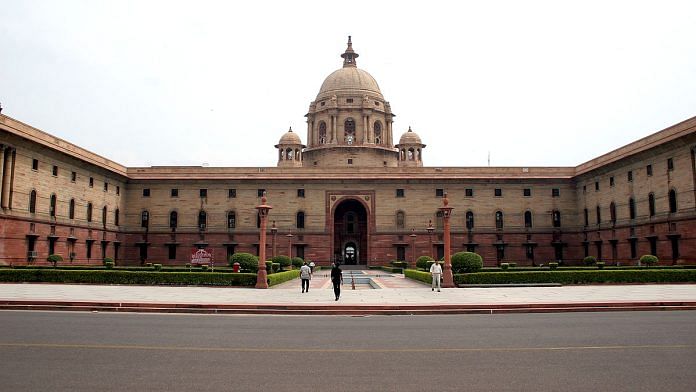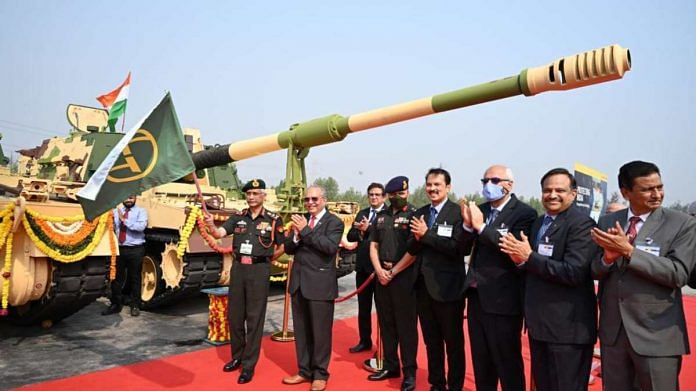Lt Gen. Y.K. Joshi says PLA was refusing to vacate area between Fingers 4 & 8, but after India occupied Kailash heights, China was forced to negotiate on its terms.

ew Delhi: The India-China disengagement at the Pangong Tso in Ladakh is under conditions favourable to India, which is a success, Northern Army Commander Lt Gen. Y.K. Joshi has asserted.
Joshi told ThePrint that the Army’s action to occupy heights on the southern bank of the lake last August turned the tables on the People’s Liberation Army (PLA) and forced it to come to the negotiating table.
“The agreements and protocols that existed between India and China were unilaterally violated by China. The PLA tried to unilaterally change the status quo along the LAC by mobilising, deploying and using force,” said Lt Gen. Joshi, who oversaw Operation Snow Leopard, India’s response to the Chinese aggression.
A Kargil War hero and former defence attaché in China, Joshi said the Northern Command responded to the transgressions by “speedily mobilising, pitching strength opposite the friction points and posturing”.
He said five rounds of talks at the corps commander level and a series of talks at other levels failed to create any headway.
“The PLA again resorted to an aggressive move on 29/30 August night in the areas opposite south of Pangong Tso. In a quid pro quo action, Northern Command occupied the most dominating features of Rechin La and Rezang La on the Kailash range. These are the features that overlook areas up to Moldo Garrison and other areas beyond LAC well in depth,” he said.
Lt Gen. Joshi, who commanded the Leh-based 14 Corps before taking over as the Northern Army Commander, said that in a simultaneous action, heights that dominate Finger 4 on the northern bank of the lake were also occupied.
“This action turned the tables on PLA and PLA was forced to come to the negotiating table. During the 9th round of talks, PLA agreed for disengagement under conditions favourable to us,” he said.
Also read: Those criticising troop pull-back at Pangong Tso are ignorant of facts — Army ex-chief Malik
Verification process
Explaining the disengagement process, which he said has been put in writing, ratified by the headquarters, and put into action, Lt Gen. Joshi said it consists of four steps, each of which is to be followed up by monitoring and verification.
The officer, known to be proficient in Mandarin and regarded as someone who understands the Chinese psychology, said step 1 of the disengagement process involves armoured and mechanised units moving back beyond the designated lines. Step 2 and 3 include moving the infantries from the northern and southern banks of Pangong Tso, and Step 4 is disengagement from the Kailash range.
Only once a step is complete to the satisfaction of both armies will they graduate to the next, he said.
“Every day begins with a flag meeting to confirm the day’s activities, and at the end of the day, hotline messages are exchanged to confirm that each side has done its part. We are continuously monitoring from the vantage points and UAVs. As and when required, satellite images and Air Force photo recce missions are also undertaken. In case of any grey area or doubt, the same is clarified in the flag meeting,” Joshi said.
The Northern Army Commander added that a review of the implementation of the disengagement plan is also carried out during the next day’s flag meeting, and contentious issues, if any, are raised and discussed.
He said the progress so far has been satisfactory and the PLA has “shown sincerity of purpose”. Over 200 tanks and artillery pieces have been moved back.
“This activity has been verified through satellite images and photo recce missions of the Air Force. It can be seen from the vantage points that PLA has started removing the shelters, dismantling the fortifications and helipads,” Joshi said.
Confirming ThePrint’s 15 February report on the state of disengagement, he said the Chinese-made jetty at Finger 5 has been moved out and the related infrastructure removed.
“It has been agreed upon that all the structures that were created post April will be removed, and they are seen adhering to this commitment. We can say that step 2 has been completed and step 3 is in progress,” he said.
No-patrol zone
Lt Gen. Joshi also addressed the no-patrolling zone area between Finger 4 and 8, and refuted the criticism that India has lost out to China.
He underlined that both sides have gone back to their April 2020 positions — the Indian Army was occupying the Dhan Singh Thapa post (between Finger 2 and 3) and the PLA was east of Finger 8, he said. The PLA used to patrol till Finger 4, he pointed out, adding that India’s perception of the LAC runs along Finger 8, whereas the Chinese perception is till Finger 4.
“Post April 2020, PLA occupied areas till Finger 4, constructed dugouts, sangars (stone fortification), helipads, pitched tents and created other structures. In the current understanding, both the sides have gone back to April 2020 scenario wherein our last post remains Dhan Singh Thapa post and PLA goes back east of Finger 8,” he said.
Lt Gen. Joshi, who also commanded the 3 Infantry Division in Leh, said some people are trying to create a misperception that by accepting this no-patrolling area, India has lost out to the PLA.
“The fact is that it is a huge success for us. First, PLA is moving back beyond our claim line, that is Finger 8. Second, this agreement denies them the advantage of patrolling till Finger 4. In fact, the PLA will not be carrying out any activity, military or otherwise, in the areas claimed by us. Third, they will be restoring the entire land form within our claim line and dismantling all the structures that were created post April 2020. Hence, the realities have to be understood in the correct perspective,” he said.
The officer added that at one point, the PLA was refusing to vacate this area between Finger 4 and Finger 8, but once the tables were turned on 29 and 30 August, “it was forced to negotiate according to our terms”.
Also read: Army chief Naravane calls for renewed focus on Northeast amid ‘rising footprints of China’









































































